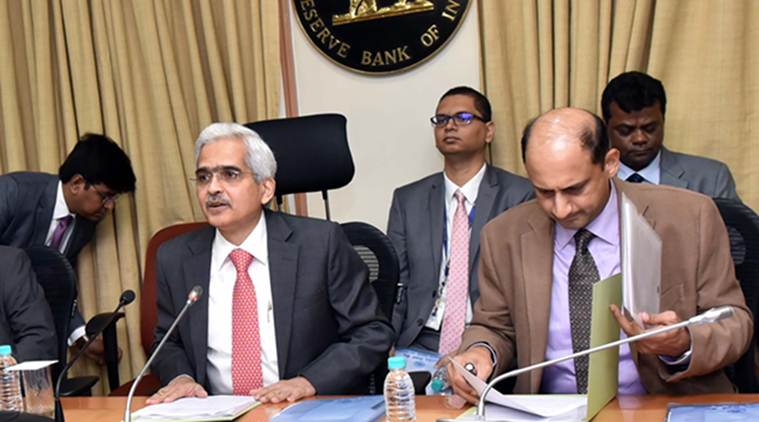Lenders must go for board-approved policies for resolution: central bank
Two months after the Supreme Court declared the RBI’s “February 12 circular” last year on the resolution of stressed loans as unconstitutional, the central bank Friday released fresh guidelines which mandate that defaults should be recognised within 30 days.
The February circular had mandated lenders to start resolution even if there was a one-day default. The new circular has also relaxed several other provisions, including norms related to consent of lenders and offers more freedom to lenders in implementing the asset resolution plan.
According to these new norms, lenders should review accounts within 30 days of default and initiate a resolution plan under the new “Prudential framework for resolution of stressed assets” before the default. The central bank also changed its earlier norm of 100 per cent mandatory approval from creditors for a resolution plan and has allowed approval of 75 per cent of creditors.
On April 2, 2019, a two-member bench of the Supreme Court had said, “the impugned circular will have to be declared as ultra vires as a whole, and be declared to be of no effect in law”.
The previous circular had directed banks and lenders to refer any defaulting loan account of over Rs 2,000 crore to the bankruptcy court under the Insolvency and Bankruptcy Code (IBC) if it is not resolved within 180 days of default.
Though the judgment was a setback for the central bank, which was planning to extend these norms to non-banking finance companies (NBFCs), several defaulting power projects got a temporary reprieve. Several companies from the power and shipping sectors had challenged the February 12 circular, arguing that the time given by the RBI was not enough to tackle bad debt.
The February 12, 2018, notification, which was announced after an asset quality review that detected a huge level of non-performing assets (NPAs) in the banking sector, had replaced the RBI’s earlier instructions on the resolution of stressed assets that required banks to file an insolvency application in case of non-implementation. What had upset corporates was the framework for loan resolution, which defined a one-day default norm in line with the IBC framework. NPAs of the banking system has already crossed the Rs 10-lakh-crore mark. The RBI had sent a list of 12 big defaulters to banks for resolution under IBC and later identified another 28 defaulters.
The RBI’s revised circular states that lenders should initiate the process of implementing a resolution plan (RP) even before a default. In any case, once a borrower is reported to be in default by any of the lenders, they should undertake a prima facie review of the borrower account within 30 days from such default.
“During this review period of 30 days, lenders may decide on the resolution strategy, including the nature of the RP and the approach for implementation of the RP. The lenders may also choose to initiate legal proceedings for insolvency or recovery,” it said.
“All lenders must put in place board-approved policies for resolution of stressed assets, including the timelines for resolution,” it said. Lenders should recognise incipient stress in loan accounts, immediately on default, by classifying such assets as special mention accounts (SMA).
Accordingly, the SMA-0 list will have companies, which are in default for 1-30 days, SMA-1 for 31-60 days and SMA-2 for 61-90 days.
The inter-creditor agreement (ICA) signed by lending banks should provide that any decision agreed by lenders representing 75 per cent by value of total outstanding credit facilities and 60 per cent of lenders by number should be binding upon all lenders. Resolutions plans should provide for payment not less than the liquidation value due to the dissenting lenders, it said.
“The new circular has proposed a system of disincentives in the form of additional provisioning for delay in implementation of resolution plan or initiation of insolvency proceedings. Future upgrades to be contingent on a meaningful demonstration of satisfactory performance for a reasonable period,” the RBI said.
Additional provisions will have to be made by the banks as percentage of total outstanding if RP not implemented within the timeline. There will be 20 provisions if the resolution is not implemented in 180 days from the end of the review period. Banks will have to make another 15 per cent provision 15 per cent (total additional provisioning of 35 per cent) if the resolution is not done in 365 days.
Banks are required to implement resolution plans for defaulted loans within 180 days from the end of the review period. The reference date for loans of Rs 2,000 crore and above will be June 7, 2019. For loans above Rs 1,500 crore but less than Rs 2,000 crore, the date will be January 1, 2020. For loans less than Rs 1,500 crore, the date will be announced later by the RBI.
The central bank also warned that any action by lenders with an intent to conceal the actual status of accounts or evergreen the stressed accounts, will be subjected to stringent supervisory or enforcement actions, including higher provisioning on such accounts and monetary penalties.
Source: Read Full Article


